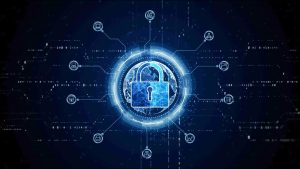In today’s hyper-connected world, where digital interactions are integral to both personal and professional life, the importance of robust digital security cannot be overstated. Cyber threats are increasingly sophisticated, and individuals and organizations alike must arm themselves with essential tactics to protect their online presence. One of the fundamental principles of digital security is adopting a proactive mindset. Users should recognize that they are potential targets and take steps to safeguard their information. This begins with the creation of strong, unique passwords for each online account. Utilizing a combination of upper and lower-case letters, numbers, and special characters can significantly enhance password strength. Furthermore, employing a password manager can help manage complex passwords, reducing the likelihood of reusing weak passwords across multiple sites. Two-factor authentication 2FA is another essential tactic that adds an extra layer of security.

By requiring a secondary verification step such as a text message code or an authentication app 2FA makes it more challenging for unauthorized users to access accounts. Implementing this simple measure can thwart many common cyber-attacks, such as phishing and credential stuffing. Regular software updates are crucial in the fight against cyber threats. Cybercriminals often exploit vulnerabilities in outdated software, Send Flowers making timely updates essential. Enabling automatic updates for operating systems and applications can streamline this process, ensuring that users always benefit from the latest security patches. Awareness of phishing tactics is vital for protecting sensitive information. Cybercriminals often impersonate trusted entities through emails or messages, luring users into revealing personal data. Educating oneself on how to identify suspicious communications such as checking for unusual sender addresses, grammar mistakes, or unexpected attachments can help mitigate this risk.
If in doubt, it is best to contact the organization directly rather than clicking on any provided links. Additionally, using a virtual private network VPN can enhance online security, particularly when connecting to public Wi-Fi networks. VPNs encrypt internet traffic, making it difficult for hackers to intercept sensitive information transmitted over unsecured networks. Lastly, maintaining regular backups of critical data is a vital strategy for recovery in the event of a cyber-incident. Utilizing cloud storage solutions or external hard drives ensures that users can restore their information without succumbing to ransomware or data loss. The Digital Security Playbook emphasizes that safeguarding online presence requires a comprehensive approach. By adopting proactive measures, remaining vigilant against threats, and prioritizing education about security practices, individuals and organizations can significantly enhance their digital security posture. In an era where digital threats are ever-present, these essential tactics are not just recommendations; they are necessities for ensuring online protection.

